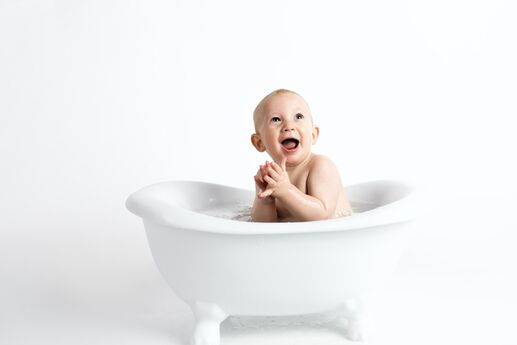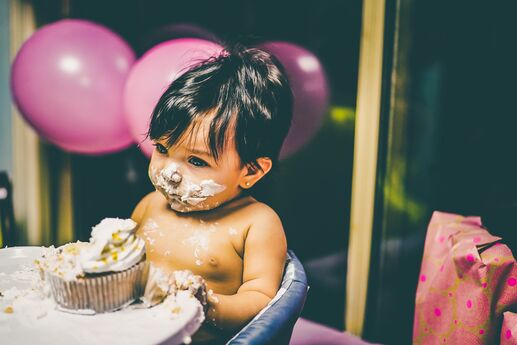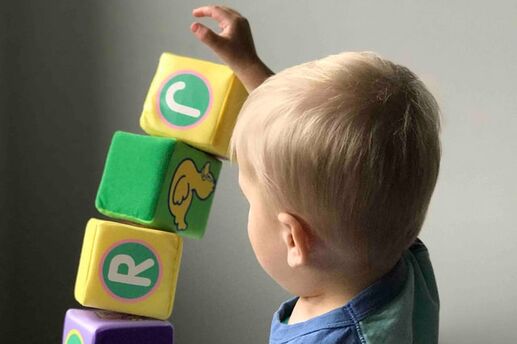First Baby Bath
When my daughter, Morgan, turned 7 days old, I noticed that we’ve reached a big baby development milestone-- her umbilical cord stump fell off. Until then, we gave her washcloth baths to avoid getting that area wet.
Under the instruction of her doctor, we knew once her cord fell off that it was safe to give her a tub bath, so I started preparing my baby bath time toolkit. It included:
- Towel with hoodie to keep her cozy and cute from head to toe
- Gentle baby shampoo and wash for that irresistible clean baby smell
- Washcloth to get inside her fingers, behind the ears, under the neck and in her many folds
- Diaper for immediate coverage, as “accidents” were a regular occurrence
When the time finally arrived, we took off her diaper and laid her in her baby bath seat, where she could be comfortable and supported. Although we knew she was ready for this baby development milestone, there was still a lot to do to keep her safe. To prevent her from becoming cold, we placed a warm washcloth on her belly. I quickly -- but gently -- washed her head to toe while my husband documented the experience. It was certainly a sprint, as I was terrified of her uncontrollable bowels.
Of course we made sure there was still enough time for belly kisses and bath time tunes.
For a baby who was solely capable of lying like a blob all day, I was surprised at the level of grime she had accumulated. This came at the perfect time, since our little one was in desperate need of a bath!
Surprisingly, Morgan loved the water from the minute we put her on her baby bath seat. She seemed to enjoy the gentle massage of the washcloth, and I enjoyed staring in awe at this perfect little person we had welcomed into our lives a week ago.
Once the cleaning mission was accomplished, my husband held his arms with the towel while I lifted Morgan out of the tub. Little did I realize how slippery a wet and wiggly newborn is. Her body felt as though she was given a butter bath, but all 7 pounds of her couldn’t escape my loving hold.
As we wrapped her up and dried her off, I knew we had rocked this baby development milestone, and that our bath time future would involve playful giggles, water kicks, and rubber toys. But for now, belly kisses would do just fine.
Photo by Henley Design Studio on Unsplash







